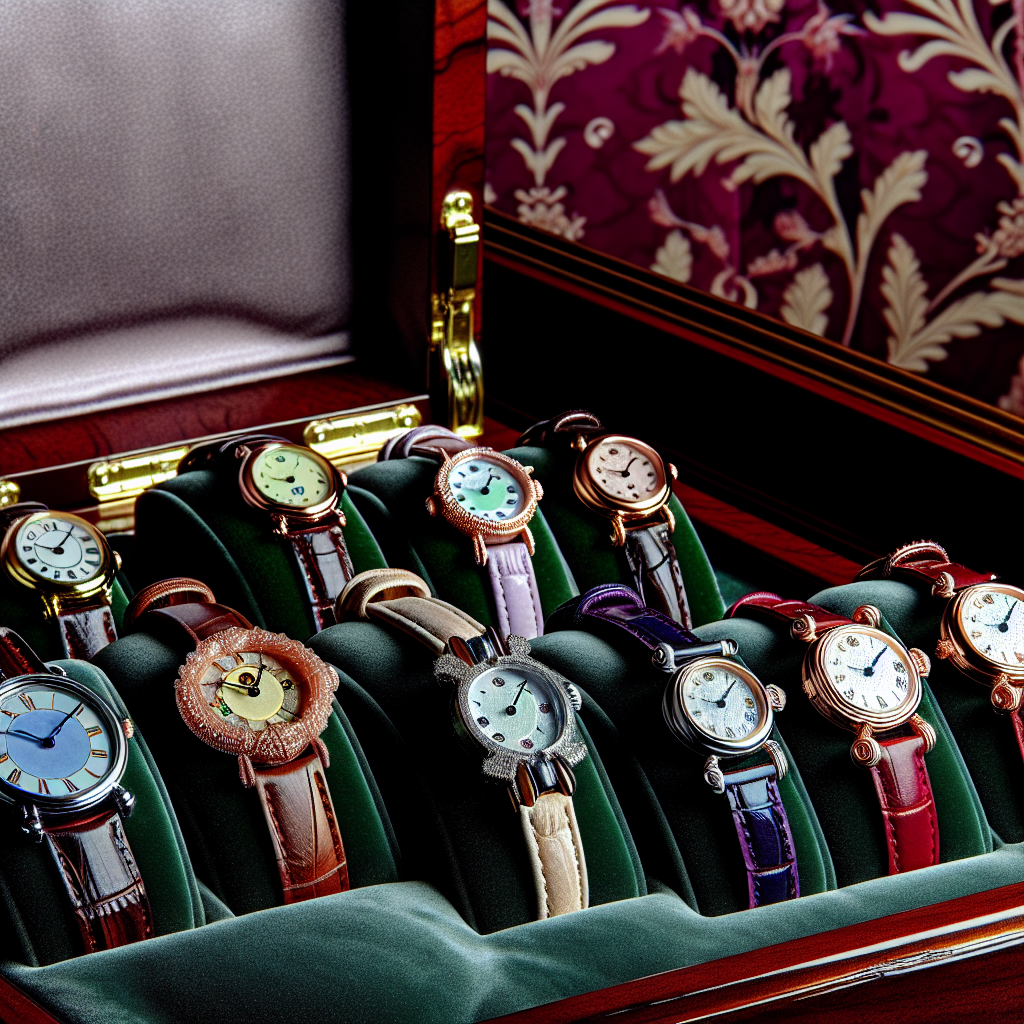“`html
Luxury Bespoke Kids’ Watch Collections: Starting Early with Horology
In an era where mindful parenting meets elevated living, luxury has taken on a new role in child development—one that merges refinement with education, style with substance. A growing segment within this evolving landscape is the emergence of bespoke kids’ watch collections. No longer reserved exclusively for adults, high-end timepieces are now entering nurseries and junior wardrobes under the sophisticated stewardship of horological visionaries. These exquisite, often customized creations are not mere status symbols—they are instruments of legacy, learning, and early sophistication.
For parents of means, investing in a bespoke child’s watch is more than just matching a pint-sized tailored outfit. It marks a deliberate introduction to the nuanced world of horology—an intricate discipline that fuses artistry, mechanical engineering, and rich heritage. Gifting a luxury timepiece to a child conveys values like precision, responsibility, and timeless design. Moreover, it fosters a meaningful bond with the concept of time, teaching the importance of punctuality, stewardship over possessions, and a sense of generational continuity.
More than a fleeting trend, luxury kids’ watches embody an intentional approach to early education. Several prominent high-end watchmakers—such as Rolex, Patek Philippe through heirloom gifting, and boutique houses like Furlan Marri or Bamford London—have turned their attention toward younger clientele. These watches are carefully designed with youth-oriented aesthetics and smaller casings while preserving technical accuracy and horological essence. Vibrant, hypoallergenic straps, scratch-resistant sapphire crystals, and simplistic yet precise Swiss movements make these watches as fun and durable as they are educational and stylish.
Customization remains a key hallmark of these collections. Features like birthstone-set dials, engraved family crests, limited-run monogrammed editions, and even heirloom certificates transform watches into personal legacy pieces. Some families even go a step further, collaborating directly with independent watchmakers to co-design timepieces alongside their children, cultivating both creativity and a foundational understanding of watchmaking craftsmanship.
The surging interest in bespoke luxury kids’ watches also stems from their increasing role in commemorating significant life milestones. From birthdays and Bar/Bat Mitzvahs to early academic achievements or environmental volunteering, these watches become meaningful and enduring gifts. By presenting a luxury timepiece, parents gift more than a memory—they offer a doorway to lifelong appreciation for craftsmanship and core personal values.
As elites increasingly value early exposure to specialized interests, luxury children’s watches reflect a powerful confluence of culture, education, and heritage. But beyond symbolism, do such investments offer measurable cognitive or developmental advantages?
Timepieces That Teach: A Cognitive Edge from Ticking Hands
From a developmental and behavioral standpoint, introducing children early to watches yields significant benefits. According to the American Academy of Pediatrics, understanding time and maintaining a schedule supports executive function in children—skills critical for planning, attention, and time management development. Wearing a watch, especially a mechanical or analog piece, helps children visualize and interact with time continuously, reinforcing abstract concepts through daily interaction.
Additionally, child psychology research indicates that tactile learning with physical tools enhances memory and conceptual retention. For example, open-dial or skeleton watches visually expose mechanical components, offering a fun and functional way to explore STEM education. A study published in the Journal of Education and Learning found that early exposure to mechanical tools correlates with enhanced problem-solving and critical thinking, especially when woven into engaging narratives or interactive experiences like watch design workshops.
Learning Through Luxury: Horology Meets STEM & Heritage
Responding to the educational promise within horology, several luxury watch brands now partner with STEM programs and learning institutions. Notable brands such as Oris and Ressence contribute to educational initiatives as part of their corporate social responsibility. Their support for horology-themed workshops and exhibitions signifies a growing commitment to using watchmaking as a gateway to technical education.
Workshops such as those provided by the Horology Institute’s Junior Watchmaker Program are gaining momentum in both private academies and homeschooling networks. Not only do they introduce mechanical principles, but they also spotlight artistic elements like dial design, precision engraving, and case aesthetics—marrying science and creative expression.
On an emotional level, owning a fine watch teaches self-care and discipline. Developmental pediatrician Dr. Laura Markham advocates that children thrive when given meaningful responsibility: “A watch, particularly one that comes with caretaking rituals, signals trust and helps nurture independence.” These subtle lessons translate to stronger self-worth and maturity over time.
More Than a Gift: Legacy, Identity, and Emotional Growth
Bespoke watches are more than a material possession—they are personal statements of family identity and continuity. From customizing a watch face to engraving a momentous date, the experience of designing a child’s luxury timepiece becomes a collaborative family project. This instills not just taste and style but also introduces the importance of preservation, legacy planning, and intergenerational memory.
A child may outgrow outfits and toys, but a finely crafted watch endures across time, evolving from an educational tool to a treasured family heirloom. Its physical and symbolic weight instills a deep sense of belonging, confidence, and resilience.
References
- American Academy of Pediatrics – Helping Children Understand Time
- Journal of Education and Learning – Tactile Learning in Early STEM Education
- Dr. Laura Markham – Teaching Responsibility Through Trust
- Oris Watches – Educational and Social Outreach
- Horology Institute – Junior Watchmakers Program
“`

Dominic E. is a passionate filmmaker navigating the exciting intersection of art and science. By day, he delves into the complexities of the human body as a full-time medical writer, meticulously translating intricate medical concepts into accessible and engaging narratives. By night, he explores the boundless realm of cinematic storytelling, crafting narratives that evoke emotion and challenge perspectives. Film Student and Full-time Medical Writer for ContentVendor.com



